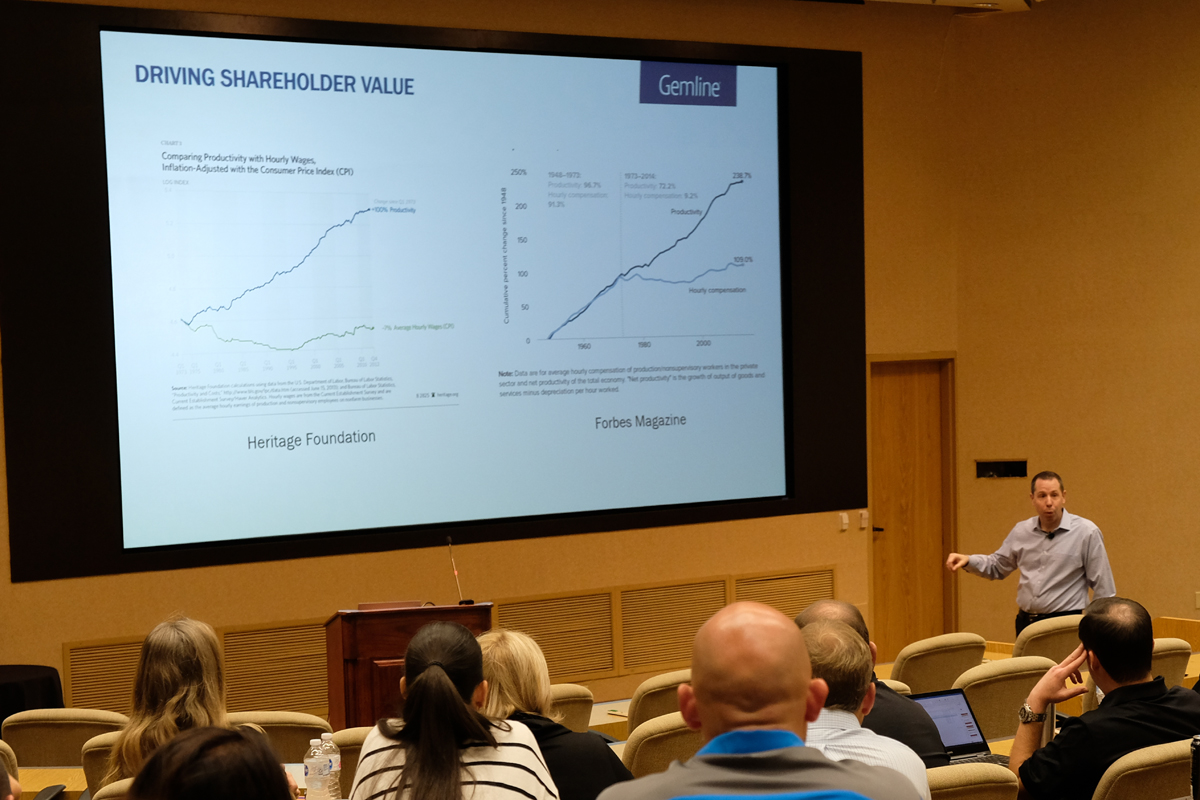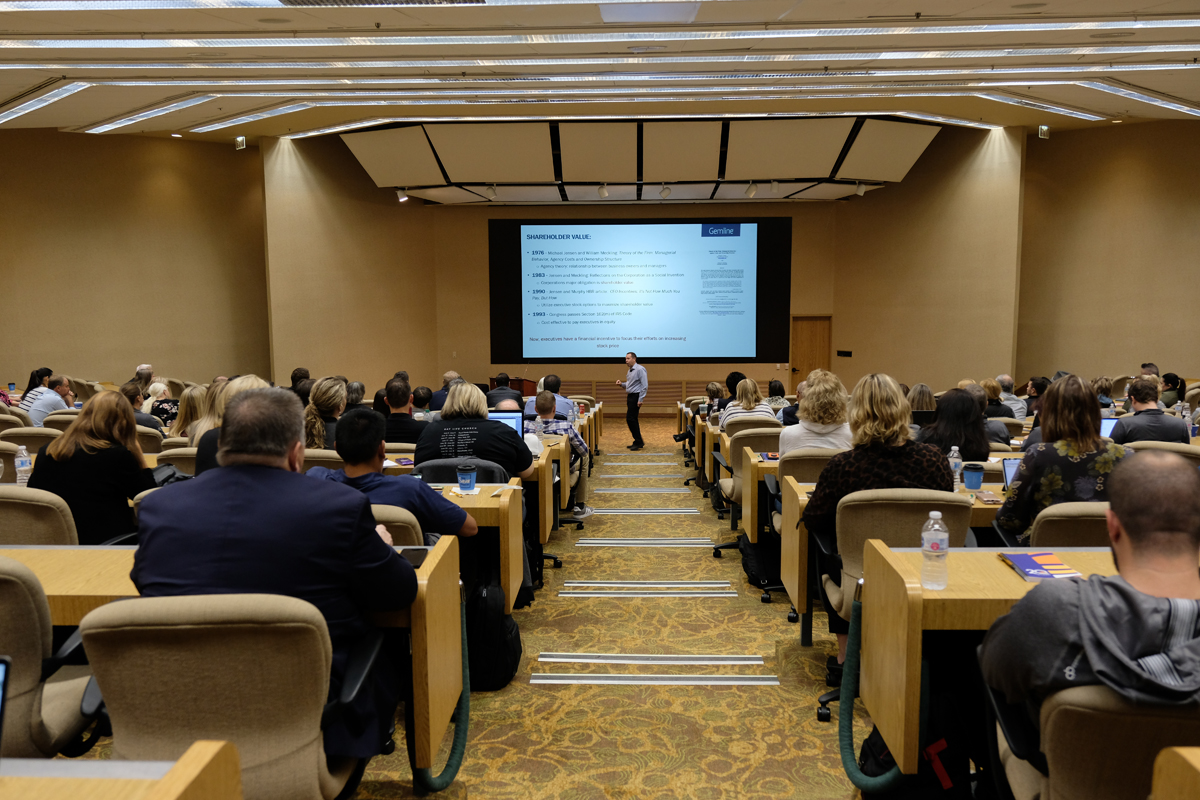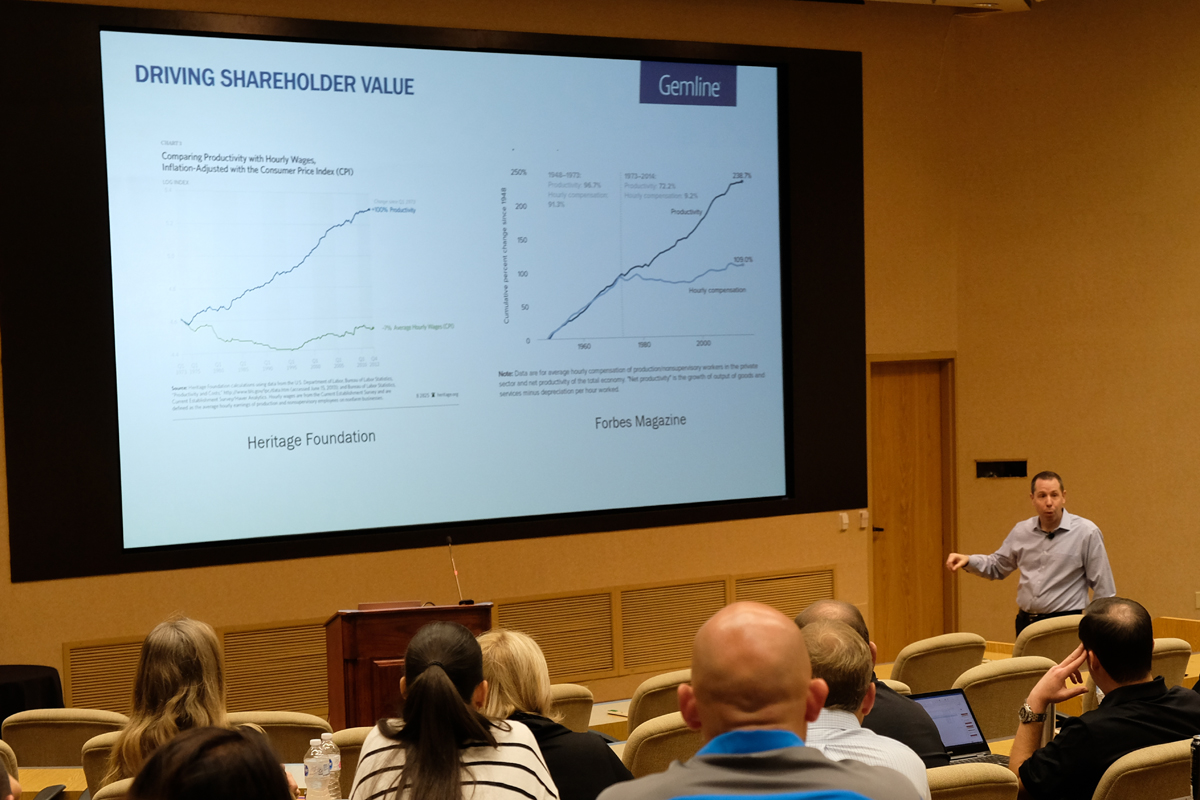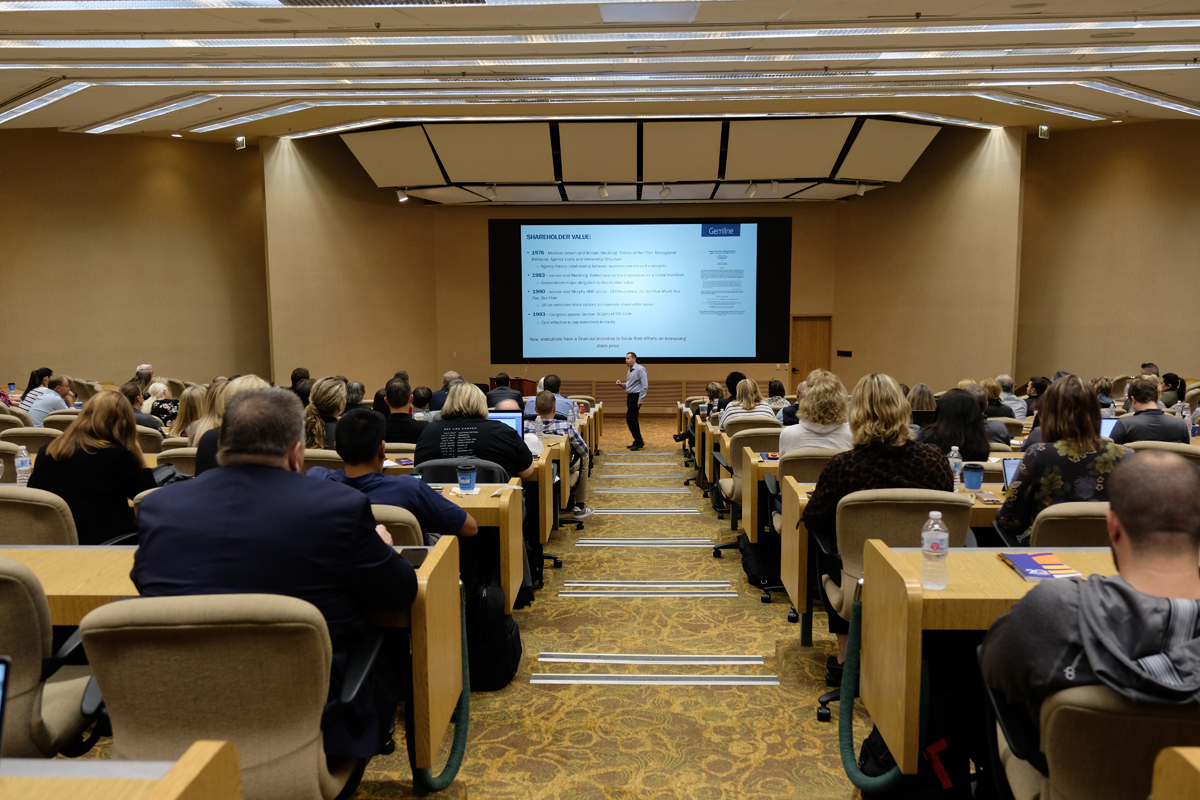Gemline’s Isaacson Delivers Thought-Provoking General Session At LDW
The final day of PPAI’s 20th annual Leadership Development Workshop (LDW) in Grapevine, Texas, began with the general session, How Did We Get Here: An Evolving World, Tariffs and the Industry, presented by Jonathan Isaacson, chairman and CEO of supplier Gemline. The presentation, which was punctuated with commentary and witty humor, dove into the hefty topics of global economic, financial and social change, and how moves made individually by countries, like China, trickle down to impact the promotional products industry and its supply chains. In the session, which was well received by attendees and culminated with boisterous applause, Isaacson made the complex topic digestible by taking listeners through a journey of both historic and modern changes worldwide.
Starting in the 1990s, Isaacson said, inequality became more prominent. The costs of health care and housing started rising, and there was a race-to-the-top mentality. The Ivy League, he said, became akin to a sports league, with everyone competing against each other for the position of top player with the most value. He described the Gini coefficient, which is a measure of the extent of inequality of values, usually personal income. When the Gini coefficient is zero, he said, there is perfect equality in terms of income distribution, but when the coefficient is one, then one person or entity maintains all power and there is total inequality. (The Gini coefficient of the U.S. is 0.49.) The division of wealth, in large part, is the fuel that ignites many of these worldwide changes.
Venturing outside of the U.S., Isaacson identified several countries to watch for in terms of change, power and unrest. “The political winds are blowing hard,” he said. The most important places to watch, politically, are Italy, the UK and Ireland, India and Pakistan, and Japan and South Korea, outside of the relations between China, of course. The discussion then turned to China and trade friction, which is causing the greater U.S.-China rivalry, he said. He explained the serious issues occurring in China, from the country having some 160,000 troops patrolling the North Korea border, to the alarming rate of Muslims jailed in Xinjiang—according to The New York Times, there were a total of 230,000 people sentenced in Xinjiang between 2017 and 2018, and more than half were Muslims, namely Uighurs and Kazakhs. He also mentioned the Made in China 2025 initiative, a plan developed by the Chinese government to make China the world’s leading supplier of innovative technologies. China is positioning itself, in many ways, to be a major powerhouse in the production of consumer goods, but it’s not without turmoil, he said. In such a rapidly changing world, he said it’s crucial to consider what China is doing as a country, and how we, as a country, as a community, as a business or as an individual, perceive these changes.
As for the tariffs, Isaacson believes “there’s no rhyme or reason” for the increases, but it’s important for professionals to work to understand the causes and effects of new policies or issues affecting them, directly. As a business, to better understand the greater economic climate, “is to control your destiny,” he said. The key to adjusting to such a demanding and ever-changing world is through awareness, and he believes there are three types of companies now in the marketplace: the digital native, the industrial companies that are becoming digital and “the walking dead,” which he referred to as companies that will ultimately shutter because of their inability to evolve to meet changing demands.
Isaacson also explained the problems challenging suppliers and distributors, which are quite similar. Suppliers are dealing with the impact of the tariffs, tighter labor markets and high costs of labor—he particularly discussed suppliers’ shared difficulty of finding employees—supply chain changes, growing IT demands, regulations (like Prop 65), the risk of junk—creating products that are perceived as wasteful or as having a poor carbon footprint—and distributors’ limited timeframes. On the other side, distributors are dealing with the tariff increases, transparency of the supply chain model, the salesperson split—a 50/50 split, which Isaacson said will soon no longer be enough—technology changes, regulations, inflation and the risk of junk. A major problem that’s currently taking place with distributors, he said, is some of them are partnering with overseas suppliers they’ve never done business with on projects involving their biggest clients. He explained that in the United States, there are thousands of products banned by the government but sold by third-parties online. These products may be banned because they don’t meet compliance, or health and safety standards but they are not banned overseas, and so suppliers may source products that can cause the distributor more harm than good. It’s another reason, he said, that promotional products professionals must remain ever-vigilant.





